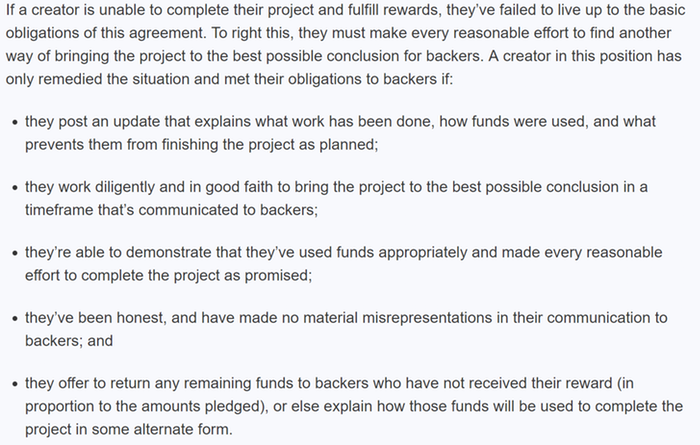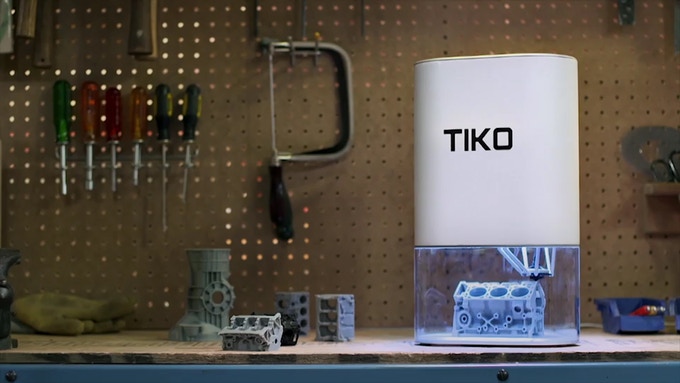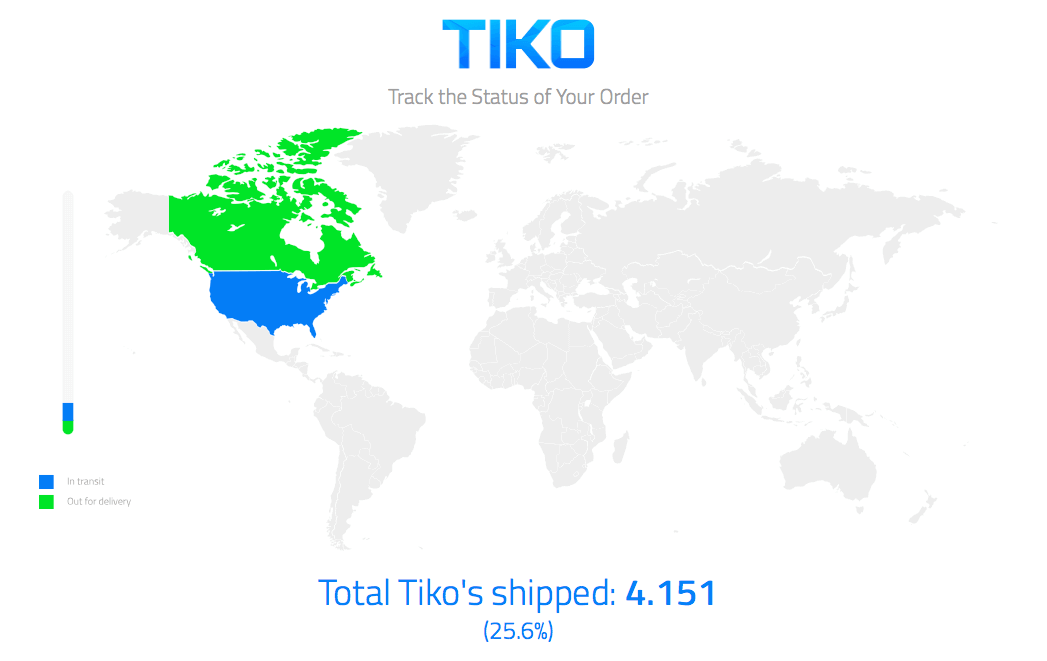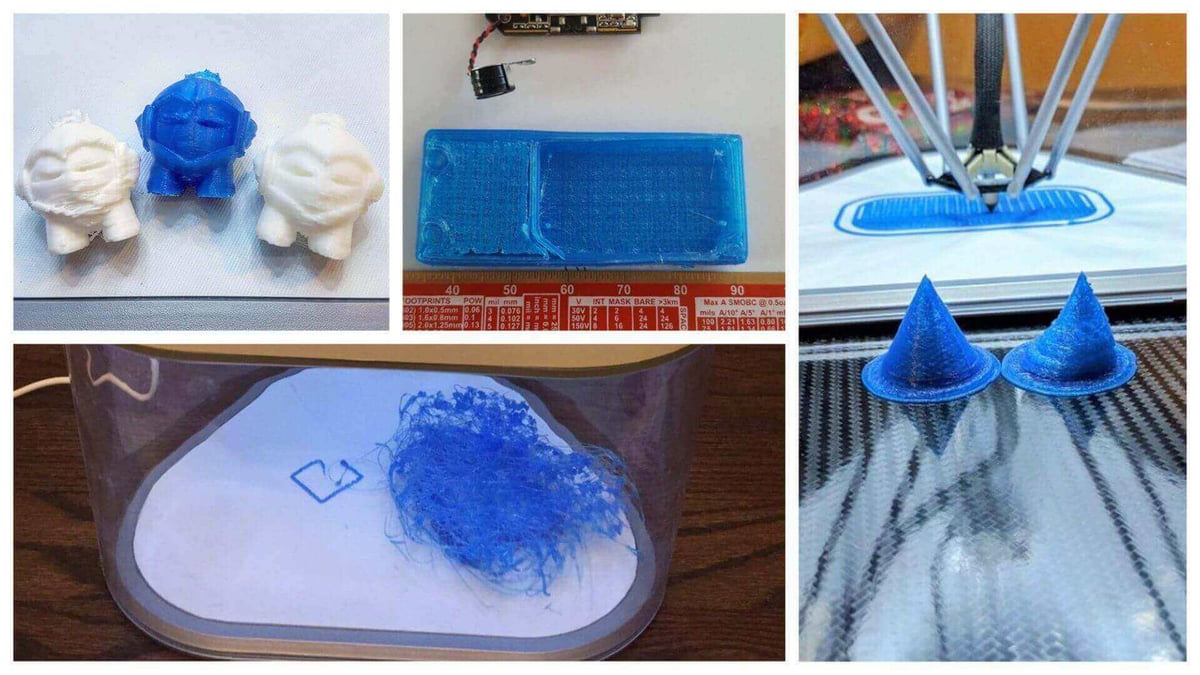It’s official: 3D printer manufacturer Tiko 3D is closing down. Most of the 16,538 Kickstarter backers won’t ever see a working printer. But there‘s a small chance for a refund.
Update 11/27/17: Tiko 3D have sent an update to their backers explaining how the money was spent. If you want to jump to the section directly and want to apply for a partial refund, please click here. If you want to get the whole story, just continue.
It wasn’t exactly a surprise.
First, there were delays. Then, there were rumors. In early 2017, the 3D printer company that collected nearly $3 million on Kickstarter, had run into deep financial trouble.
Tiko 3D had shipped 4,151 semi-operational units to backers in Canada and the US, but they couldn’t manufacture and ship the 3D printers to the remaining 12,387 backers anymore. The development came to a halt, as the company was now focussing on looking for investors – without success.
On November 21, 2017, they now officially closed down the company.
In a statement to its Kickstarter backers, Team Tiko made it clear that, accordingly to Section 4 of the Kickstarter Terms of Use, they are no longer obliged to complete the project and fulfill rewards.

This a sad day for the Tiko Kickstarter backers: They have invested in a company, its team, and the product. They become “part of the company”, so to speak – and are also sharing its risks. Meaning: It is highly unlikely there will ever be a refund.
The Search For Investors Turned Out To Be Unsuccessful

The backers were informed about the situation on November 21, 2017. In the verbose statement, Tiko talk about out they were looking hard for investors.
First, they contacted Venture Capital companies. But a pattern soon emerged: “Our capital requirements were too large for Angels, but our operation was too risky for Venture Capital. We had scaled up too soon, and sought capital too late.”
After being turned down by investors, they talk about turning towards distributors and even local distributors – and finally tried to sell the company and its technology as a whole.
“There are some rather powerful technologies within Tiko’s hardware and software – technologies we believed could be of value to established manufacturers. Even if a company didn’t wish to manufacture the Tiko printer, the technologies inside could be of interest to them. As such, we pursued a number of leads to sell the company/IP in exchange for the minimum funds required to ship Tiko (or a substitute printer) to backers, or otherwise offer a full. We received some interest, but nothing that would completely satisfy Tiko’s obligations.”
As the last potential investor shied away, Team Tiko had to admit the project had failed. “With deep sadness in our hearts, and much to our disappointment, we are officially closing the company. It’s over.”
How did Tiko Spend the Backer’s Money?
Tiko sent their last update (#29) to the backers explaining how the company’s money was spent.
- 41 percent of the Kickstarter money went into manufacturing, transporting, storing and assembling the printer’s components. Most of the printer components (in batches of 15,000-20,000 units) are still stored in inventory and will be liquidated in the next months.
- 24 percent went to into payroll of the #20 employees for two years. According to the update, no bonuses were paid, the founders were paid a “humble salary”.
- R&D and the initial marketing campaign add up to 13%.
Tiko 3D and its assets have been placed in the hands of a Licensed Insolvency Trustee (BDO Canada Limited). They will handle the liquidation. Also, they will “ensure a fair and impartial re-distribution of realized funds to backers and other creditors”, says Tiko’s last official statement. Technically, the founders are not involved with the company anymore.
If you are a backer and your printer wasn’t shipped, you will receive an email containing instructions for filling out a creditor application. Make sure you complete and return this application to secure your status as a creditor.
The trustee will then begin liquidating the assets. Tiko 3D estimates the process could take 9 to 12 months to complete. The trustee will then communicate with the backers via email once the assets have been liquidated and funds are ready for distribution.
According to the update, “the goal is to reach a 10-15% refund, however, this is only a goal. The realized amount could vary substantially.”
It is unclear how the money will be divided among the creditors (i.e. banks, parts manufacturers, backers).
Foul Play Regarding Additional Shipping Funds?

One thing backers complain about are the shipping fees. Tiko had collected a significant fee for shipping from the backers in advance. It‘s not clear if this money legally was a part of the investment or if it should be refunded. The comments on Kickstarter got increasingly annoyed about this topic (“Matt Gajkowski, Sharon Charitar, and Michael Zhang took our 3 million dollars + collected shipping (easily > 0.5 million) and laughed out loud.”)
The founders have replied in their current statement:
“Shipping funds were a pre-agreed-upon portion of the Kickstarter pledge, and were collected a year before the company became insolvent. At the time of collection, tests were going well and it appeared that shipping could begin within a couple of months. This was openly communicated to backers at the launch of shipping surveys in Update #15.
There were no statements implying printers were finished or ready to ship. The shipping survey was opened early as it was deemed prudent to collect and organize shipping information/payments well ahead of the actual ship date, given that full containers had to be booked. The company simply had no way to predict the financial and technical difficulties that lay ahead.
In the final weeks before full-scale shipping, a portion of these funds was diverted toward operational costs in response to a cash flow issue leading up to pre-orders. This decision was made in a good faith effort to deliver printers to all backers and pre-order customers. Unfortunately, this strategy was not successful, and operations had to be frozen before fulfillment could be completed.”
It is yet to be determined if the last word is spoken here – probably only a lawsuit can clarify the case.
How Could This Debacle Happen?
After the closing of their Kickstarter campaign, Tiko 3D had collected $2,950,874 from 16,538 backers. The small delta 3D printer looked very promising and went for an incredible price of $99. These units were gone fast; the average backer paid $179.
As with most Kickstarter projects and hardware development in general, Tiko 3D ran into technical problems. Due to extrusion problems and chassis production failures, the 3D printers shipped a year late. Tiko 3D admits:
“We had no idea how difficult it would be to go from a prototype to mass production. We learned along the way, but most mistakes were costly and irreversible. Our greatest mistake was committing to inventory too soon. We didn’t realize it at first, but by ordering components in bulk, we had backed ourselves into a corner.”
Also, the software was more difficult than expected.
If you start looking at the Tiko User Group on Facebook, Twitter, and Kickstarter comments, you discover that some of the 3D printers had serious issues. Backers found out there were mainly software problems causing bad prints: Tiko uses a combination of flashable firmware and a web-based slicing software, which didn’t come up with the right settings. Some prints turned out nice; others were just horrible to look at.
While battling with these problems, the backer’s money burned away. In November 2016, hit a “breaking point,” while the financial resources were running thin.
“We gave it everything we had, and we made great progress, but in the end, it wasn’t enough. Software had improved, but not enough. Same with hardware and quality control. Pre-orders streamed in, but they too were just not enough. We were right at the finish line, and yet, we were miles away.”
Looking for a Tiko 3D Alternative?
When Tiko 3D launched its Kickstarter campaign, it offered an unbeatable low price. In 2015, it looked like it could disrupt the market – like the Commodore C64 did with the home computer market.
Nowadays, prices for comparable 3D printers and 3D printer kits have dropped significantly. You can get a decent budget 3D printer for a low price, starting from $220.
So, what are the alternatives to a Tiko 3D? Fortunately, there are good, reliable and affordable 3D printers to choose from.
- If you want to stay roughly in the price range of the Tiko, the “Monoprice Mini Select V2” is a good alternative (review here). It costs $220, offers a heated bed and delivers an astonishing “bang for the buck.”
- Josef Průša builds amazing open-source 3D printers. There are lots of Asian 3D printer copycats & kits of his Prusa i3 for a very low price.
- If you have some experience in DIY, there are several great models to choose from. More information on DIY and Kit 3D printers here.
- And finally, here are the best 3D printers you can buy at Amazon.
License: The text of "Tiko 3D: How To Get A Partial Refund" by All3DP is licensed under a Creative Commons Attribution 4.0 International License.

